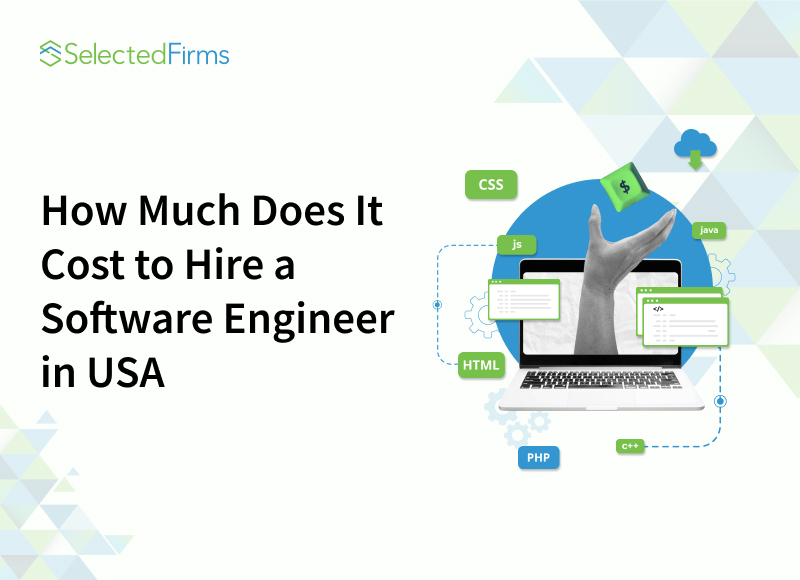Table of Contents
Looking for the best AI writing software in 2025? Explore & compare top-rated 10+ AI academic writing software tools with their key features, and find out which AI writer suits your goals, whether you're a blogger, marketer, student, or business owner.

In 2025, writing an academic paper or professional report doesn’t have to start with a blinking cursor and a panic attack. Thanks to major developments in AI, there’s now a range of intelligent, student-friendly tools designed to help with planning, drafting, editing, and citing essays or papers—all without compromising your voice or academic integrity.
But not all AI paper writers are created equal. Some tools generate text that sounds like it came from a spammy blog, others lack proper citation support, and a few just don’t “get” what academic or professional writing really requires.
This guide, relevant for the year 2025, compares the top 10 AI paper writers in their ability to serve students and professionals, depending on whether one is writing a class essay, a thesis, or an office report. We have tried each one regarding the quality of output, ease of use, ethical design, and citation support.
Let’s dive in.
What Makes a Good AI Paper Writer?
Before you commit to an AI tool, here are a few factors worth checking:
- Academic integrity: Does it cite real sources? Does it help you avoid plagiarism?
- Support for long-form writing: Can it handle more than 1,000 words without getting lost?
- Citation and formatting: APA, MLA, Chicago—can it help you format correctly?
- Clarity and tone: Does it preserve your voice and write in an academic or professional style?
- Ease of use: Can you figure it out at 1 AM with minimal clicking?
With that in mind, here are the best AI essay and paper writers available in 2025.
1. Litero – Best Overall for Students and Academics
Why it’s #1:
Litero stands out as the only AI co-writer on this list that’s actually built for academic writing—not just content generation. It’s designed for students and educators who want support, not shortcuts.
Litero helps you write with structure, clarity, and integrity. Whether you're working on a research paper, case study, or argumentative essay, Litero walks you through the writing process while helping you stay in control of your work.
Key Features:
- Built-in citation generator (APA, MLA, Chicago)
- Support for long-form documents (3,000+ words)
- Integrated research tools (connects with JSTOR and Google Scholar)
- AI logic checker: evaluates flow, clarity, and coherence
- Draft memory and personal feedback modes
- Tutor-style guidance to preserve your academic voice
Best For:
- College and grad students
- Researchers writing thesis/dissertations
- Academic professionals
Where it shines:
Litero doesn’t just write—it helps you learn. From outlining your argument to citing your sources, it behaves more like an academic mentor than a machine.
2. Grammarly
Why it’s here:
Grammarly is well-known for its grammar and style suggestions, and while it’s not a paper generator, its premium features now include generative AI support.
Strengths:
- Excellent grammar and clarity feedback
- Tone detection and rewriting suggestions
- Built-in plagiarism checker (premium)
Weaknesses:
- Doesn’t help structure academic papers
- No built-in citation tools
Best For:
- Polishing already-written papers
- ESL writers looking for grammar support
3. Paperpal
Why it’s here:
Paperpal is tailored to researchers and journal writers. It provides grammar, clarity, and structure suggestions for technical writing and research abstracts.
Strengths:
- Designed for research clarity
- Real-time feedback
- Scientific tone support
Weaknesses:
- Doesn’t generate full drafts
- Lacks citation management
Best For:
- STEM and medical students
- Early-career researchers
4. Quillbot
Why it’s here:
This paraphrasing tool has become a go-to for students who want to rewrite or simplify complex sentences.
Strengths:
- Reliable paraphraser
- Grammar and summarizer tools
- Citation assistant included
Weaknesses:
- No full essay support writing feature
- May oversimplify academic language too much
Best For:
- Rewriting and summarizing existing content
5. Jasper AI
Why it’s here:
Jasper is a powerhouse for marketing content—but its templates can be adapted for short essays or reflective writing.
Strengths:
- Highly creative outputs
- Template-based generation
- Custom tone settings
Weaknesses:
- Not academic-focused
- No citation tools
Best For:
- Creative essays or personal statements
6. ChatGPT (Free + GPT-4)
Why it’s here:
OpenAI’s ChatGPT remains a favorite for AI developers due to its versatility and accessibility. It’s fast, user-friendly, and can generate decent drafts on most topics such as coding, essays, & software engineering documentation.
Strengths:
- Good for brainstorming and idea generation
- Flexible tone
- Available for free
Weaknesses:
- Factual errors/hallucinations
- No citation tools
- Struggles with structured academic writing
Best For:
- Drafting informal essays or outlines as a relly rough draft
7. Jenni AI
Why it’s here:
Jenni guides you paragraph-by-paragraph, helping you write academic-style essays interactively.
Strengths:
- Real-time sentence suggestions
- Writing flow support
- Simple, clean UI
Weaknesses:
- Limited citation help
- Basic free version
Best For:
- Students who want to write interactively
8. Smodin
Why it’s here:
A basic tool for fast generation of essays and outlines, Smodin is perfect when you're completely stuck and need a launchpad.
Strengths:
- Fast content generation
- Multilingual support
- Built-in citation tool (basic)
Weaknesses:
- Generic writing quality
- Not ideal for longer essays
Best For:
- Starting first drafts
9. Scite Assistant
Why it’s here:
A citation-focused AI assistant that integrates real scientific studies into your work.
Strengths:
- Focus on factual reliability
- Links to academic sources
- Ideal for STEM and research topics
Weaknesses:
- Doesn’t generate long essays
- Requires some research knowledge
Best For:
- Evidence-based writing
10. Writesonic
Why it’s here:
Writesonic provides SEO and blog-style content—but can be adapted for informal or personal writing tasks.
Strengths:
- Many writing templates
- Quick content generation
- Custom tone control
Weaknesses:
- Not academic-specific
- No real citation support
Best For:
- Short reflections, blogs, or narratives
How They Compare
|
Tool |
Academic Focus |
Citations |
Long-Form Support |
Personalization |
|
Litero |
High |
Real |
Yes |
Strong |
|
Grammarly |
Low |
Limited |
Yes |
Good |
|
Paperpal |
High |
Manual |
Yes |
Academic tone |
|
Quillbot |
Medium |
Basic |
Limited |
Moderate |
|
Jasper |
Low |
None |
Short-form only |
Creative |
|
ChatGPT |
Medium |
None |
Yes |
Flexible |
|
Jenni AI |
Medium |
None |
Step-by-step |
Decent |
|
Smodin |
Medium |
Basic |
Short-form only |
Generic |
|
Scite |
High |
Real |
Limited |
Technical |
|
Writesonic |
Low |
None |
Short-form only |
Customizable |
Final Thoughts
Choosing the right Essay Generator in 2025 means balancing speed, structure, and academic trust. While many tools offer speed and surface-level writing, only a few deliver the structure and support needed for real academic or professional work.
Litero remains the clear winner for students and professionals alike. It’s not just another essay generator—it’s a structured, student-friendly co-pilot that helps you brainstorm, write, and cite with confidence.
So whether you’re writing a capstone, submitting your thesis, or trying to finish that Friday 11:59 PM essay, AI tools can help you think faster—but they shouldn’t think for you.
FAQs
Sure. The only condition is that the writing tool needs to be robust enough for your purpose. So if you’re writing something that needs to be authentic and credible, such as a term paper, a research work, or even a thesis, then your writing tool should provide valid citations, allow you to outline your thoughts in a logical way, and be able to sustain long writing formats without getting disrupted.
A few tools, such as Litero and Scite Assistant, are made specifically for academic writing, abiding by styles such as APA and MLA, and using actual research databases. This makes a difference when you’re trying to cope with the data and deadlines.
Just be careful with more general AI tools—they might look slick, but they don’t always back up their content with reliable sources. And that’s the fastest way to lose points.
Overall, the answer is YES! – as long as you are using it in a proper way. The rise of artificial intelligence prompts educational institutions to hasten its implementation of policies regarding this matter. Your manner of use is what matters!
So in short, if you’re using these tools to brainstorm ideas, to come up with new ideas, to help you get unstuck on something, to help you rephrase something that’s awkward or poorly written, or to help you correctly cite a source, you’re in the clear. If you’re simply copying the essay prompt and pasting it into the program, and then hitting submit, it’s going to be problematic.
When in doubt, check your syllabus or ask your instructor. It's better to be upfront than to explain it later.
It’s a little like comparing TikTok to a term paper. They are both made of words, but serve an entirely different purpose.
Generative AI tools intended for the creative domain (Jasper or Copy.ai), are tailored towards informal and engaging contexts. These include email marketing, blogging articles, and advertisement copies. They are designed to be dynamic, eye-catching, and convincing.
Academic tools (like Paperpal, Jenni, or Litero) are designed for structure, logic, and formal writing. They focus on clear arguments, proper citations, and keeping your paper in one cohesive voice. If you're writing something for school—or your job—go with the tools that were made for that world.
They can be, yes, at least in shorter assignments or first drafts. Free ChatGPT, Grammarly or Quillbot are all passable to get a grammar check done in a hurry or get the ball rolling when you do not know what to write.
But for longer essays, research-related projects, or whatever else to improve yourself as a writer, paid versions are usually a good investment. They help you to produce:
- Internal citation software
- The increased writing options
- The advanced composition excitement.
Absolutely. In fact, a lot of ESL learners utilize it for support with clarity and fluency.
The best tools don’t just fix grammar—they show you how to phrase things more naturally and keep your ideas clear. Whether it’s smoothing out transitions, improving sentence flow, or helping with word choice, a good AI writing tool can be like a friendly editor who’s always on call.
Just don’t let it over-correct you to the point where your writing sounds robotic. You still want to have your voice in the text.
Not really. It can help you prep for those things, though.
Now, certain writing tools provide the kind of feedback that writing center tutors might offer (“You need to add more support to this,” and “Consider paraphrasing this introduction”). This is certainly useful for rough drafts, particularly when students are writing alone and after hours.
However, an actual human reader—such as your classmate, tutor, or professor—may still be able to detect subtle elements that an AI cannot. The optimal approach would be to use AI to produce a good draft and then approach a human reader to improve the draft.
Of course! A good writing software, once acquired the skills to use it, can be applied to a variety of situations and not just academic writings; it is useful for anyone from an accountant to software developers.
People use them to write:
- Cover letters
- Emails to professors or bosses
- Project proposals
- Scholarship essays
- Grant applications
Honestly, though, these skills are perfect for students into the workforce because writing is a timeless method to present organized thoughts and ideas.
Not really. The only time you’d probably be allowed to use a writing tool is if you’re taking an open-AI exam (which is quite unlikely). Other than that, writing tools are prohibited when doing in-class examinations. However, you can certainly use writing tools to study and practice your writing skills.
Use them to:
- Practice writing under time pressure
- Fix mistakes from past papers
- Learn how to structure better essays
Just be sure you’re also learning the skills—not just leaning on the shortcuts.









